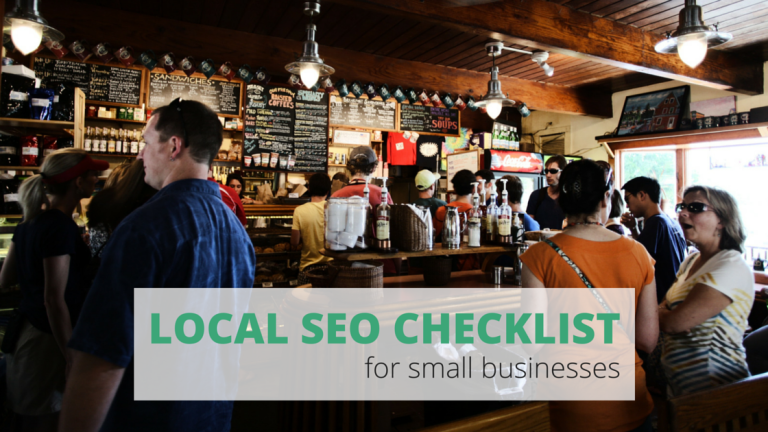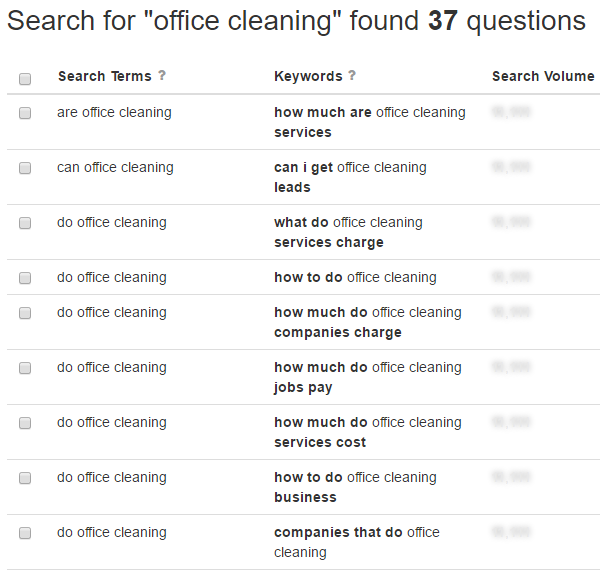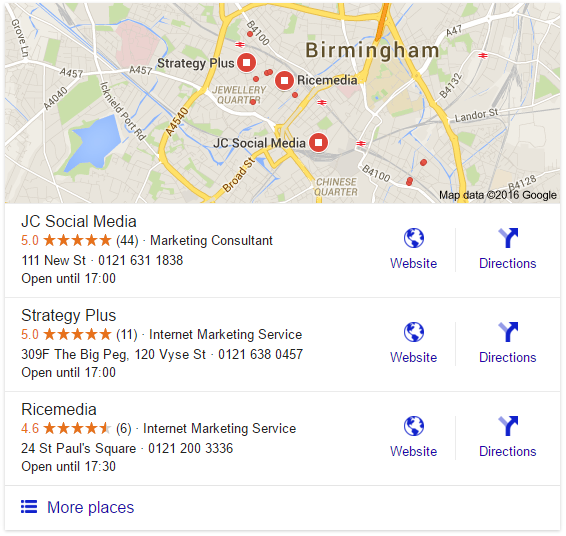
Some small businesses will never compete with the national market leaders. But this doesn’t mean that you shouldn’t be investing in online marketing. Instead, you should be concentrating on local SEO; ensuring that your business can be found by people in the specific areas that you cover.
Assuming that you already have a fully-responsive website that works well across multiple devices, there are a number of tactics you can put in place to improve your online visibility. We’ve put together this local SEO checklist so you can focus on the most important areas…
Conduct your keyword research
While keyword research has become more resource-intensive and complicated over time, it is still a crucial aspect of your overall online marketing strategy. In order for your business to be visible, you need to ensure that it can be found when people search for your products and services. And, in order to achieve this, you firstly need to find out your audiences’ intent when searching.
To begin with, draw up a list of general keywords you want your business to rank for. This will most likely be based upon the services that you provide. If you’re a local cleaning business, for example, then you might have produced a short list of some of the following keywords and phrases:
- contract cleaning
- window cleaning
- pest control
- facilities management
These are your foundational keywords; the most basic queries your customers would use to find your business. Next, you can make this list broader by using a number of different tools, specifically those that utilise Google’s autocomplete capabilities, such as this Keyword Tool. Simply type in one of your main search phrases, and this tool gives you a useful overview of questions people are asking in relation to that topic:

This tool can give you a useful staring point for producing and refining your website’s content. In this case, for example, it would make sense to create a page outlining the ‘costs’ or ‘charges’ associated with office cleaning, as well as producing a guide focussing on ‘how to do office cleaning’.
Claim your Google My Business account
One of the best – and easiest – ways of boosting your local visibility is through creating a Google My Business account. This feature lets manage the local search presence of your business, allowing you to take a deeper look at local insights. But the main advantage of managing your account is that it allows you to optimise your presence in local search. Many localised search results contain a list of three local businesses that provide the services that the user has searched for, as in the following screenshot:

Being listed in the local 3-pack, as it’s known, will give your business greater visibility as it’s possible to be listed in this section even if you don’t organically rank for the same search phrase elsewhere on the results page.
Produce and refine your website content
Content creation is central to your online marketing strategy. It is, after all, one of the most important ranking factors used by Google. While creating content is a long-term, ongoing process, there are a few simple edits that you can make to ensure that the content of your business’ website is fully optimised for people searching locally.
Your name, address and phone number should be clearly visible on every page. The search engine’s – as well as your customers – need to understand where your business is located. Furthermore, these details need to be consistent across all your online profiles, such as your social media pages.
Each page should have a unique meta-description and meta-title. The nitty-gritty of on-page optimisation can sometimes be tricky. But ensuring that each page has a unique description and title containing localised keywords is one simple way of boosting your local SEO. The following figure shows what fully-optimised description and title should look like:

Add relevant headings and sub-headings. Like meta-data, headings and sub-headings that contain your keywords and key search phrases send a signal to Google that your page is relevant.
Add and optimise images. While Google might still be primarily text-based, visual content makes your website much more user-friendly. And you can help the search engines out by making sure that you incorporate image alt tags.
Find places that will link to your business’ website
Local link-building is perhaps the most difficult aspect of local SEO. After all, why would someone be interested in linking to your site? While your long-term link-building strategy should be based around producing useful, insightful and engaging content relevant to your products and services, there are 3 simple ways to earn links to your local business’ website:
- Ensure that your business citations are up-to-date
- Ask your customers and suppliers to link to your site
- Find local business directories
Devoting a little bit of time each week to each of these link-building tactics is a straightforward way of signalling to Google (and the other search engines) that your website is trustworthy. And if you’re pushed for time, Moz offer a great service to discover and manage the various places where your business is listed locally.
Get your business reviewed
Third-party reviews are becoming more-and-more central to local SEO. In the past, businesses would create and post testimonials and reviews on their own website. But this is obviously quite a biased process; you can pick and choose the positive reviews and ignore any that are negative. Review websites – like Trustpilot – are more trusted because it’s the business’ customers who decide how good a particular product or service really is. Instead of ignoring review websites, you should use them to your advantage. Ask your best customers to leave a review, giving them specific directions on how to do so, and make sure that you continually monitor your pages so that any negative reviews can be responded to before they damage your reputation.
Produce relevant content on an on-going basis
Content is – and will always be – king. The most time-intensive part of local SEO is the continual and ongoing writing and editing of quality content. But it’s also in this area where local businesses can really stand out. You can read much more about content marketing across our blog, but here is one tip to get you started
Make sure that you have relevant, local landing pages for each of the places that your business serves. For example, a services company based in Birmingham would also likely cover cities and towns like Wolverhampton, Dudley and Solihull. Make this clear on your website, ensuring that each specific page has unique content.
If you are a small business with local coverage, we specialise in providing cost-effective digital marketing services.
- Marketing Managers Can’t Be Your Marketing Department - January 11, 2025
- Tagging Strategies: How They Maximise Your Marketing Campaigns - January 7, 2025
- First Step to Creating Killer Content – Know Your Reader! - January 7, 2025

